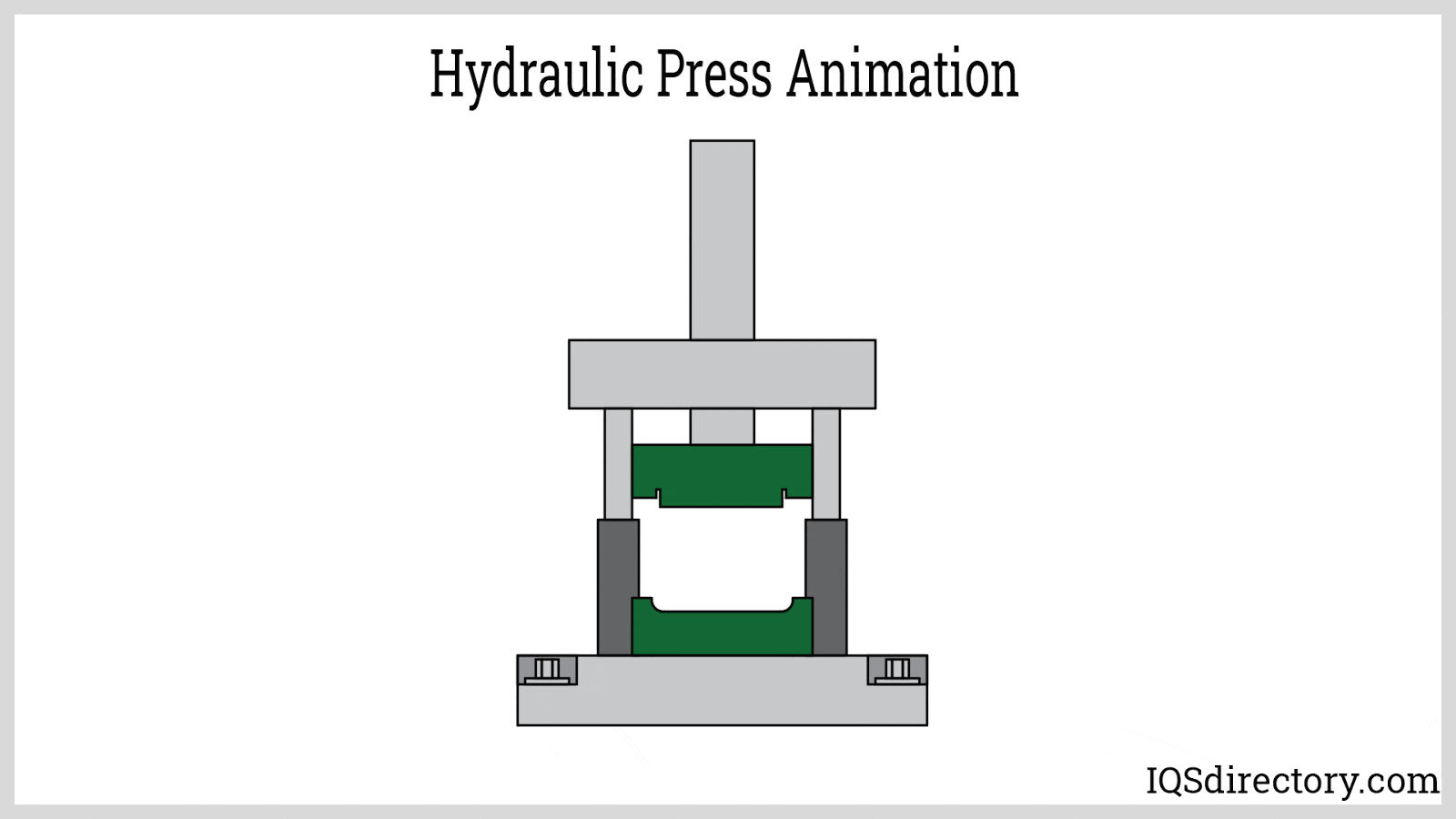Forging Presses for Smithing work are usually of the hydraulic type. The principle of a typical forging press. The water passes first from a large capacity tank to pump and then is delivered on the press with an aid of an accumulator and distributor at 200 to 300 Kg-f per cm2 (19,600 to 28,600 kN/m2). The accumulated water pressure flows into an main cylinder and presses on the top of the large piston. Since the cross-sectional area of the piston in the main material is large, the press ram is forced down upon the material to be forged which lies on the anvil with a high total into its initial position of the action of the working fluid on the piston rods in the pull back cylinder.
To perform the motion, a relatively lower water pressure, but a large volume of water per unit of time is required to accelerate the return stroke.
In press forging, pressure or squeeze is applied to the raw material and the intensity of this pressure increases as the plastic metal resists deformation. Due to the great pressure available these presses can be made to have very large capacities ranging from 300*10^3 to 1000 * 10^3 or 15000 * 10^3 kg.

Comments
Post a Comment